Skip over navigation
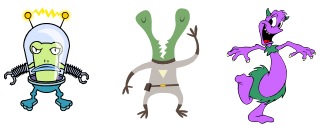
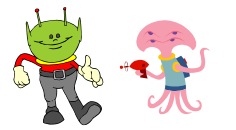
Well here are five Aliens, all from different planets.
They all count using one "hand" except the last one who uses his six tentacles.
So let me introduce them:
1st - Serious "Dubo" who counts in twos;
2nd - The two headed "Threebee" who counts in threes;
3rd - The laughing "Quort", who counts in fours;
4th - The green-headed "Chindi" who (you guessed it) counts in fives;
Finally - The four-eyed "Senda" counting in sixes.
They've come to Earth to learn about us and what we do!
They visit a school and are interested in how many earth children there are in each room.
Dubo starts counting like this (up to what we would call seven and record as "7"):

Then the last two aliens, Chindi and Senda, do their counting:
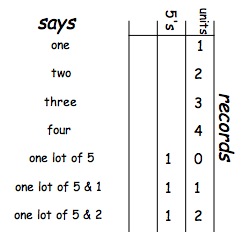
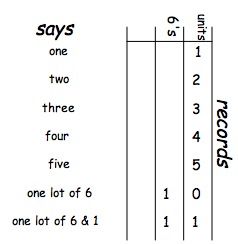


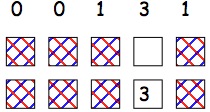

Some of you might like to go on to say what those numbers would have been if humans had been counting, for example Senda's 35 which humans would have counted as 23 (three 6's and a 5 makes 23).



Or search by topic
Number and algebra
Geometry and measure
Probability and statistics
Working mathematically
Advanced mathematics
For younger learners
Alien Counting
Age 7 to 11
Challenge Level 







Well here are five Aliens, all from different planets.
They all count using one "hand" except the last one who uses his six tentacles.
So let me introduce them:
1st - Serious "Dubo" who counts in twos;
2nd - The two headed "Threebee" who counts in threes;
3rd - The laughing "Quort", who counts in fours;
4th - The green-headed "Chindi" who (you guessed it) counts in fives;
Finally - The four-eyed "Senda" counting in sixes.
They've come to Earth to learn about us and what we do!
They visit a school and are interested in how many earth children there are in each room.
Dubo starts counting like this (up to what we would call seven and record as "7"):

Then the next two:
| Threebee | and then Quort |
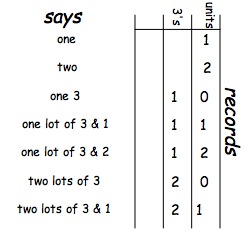 |
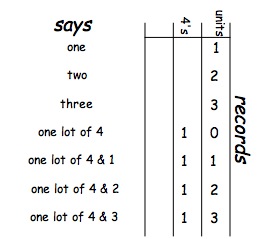 |
Then the last two aliens, Chindi and Senda, do their counting:


When we do our counting we have units, tens
and hundreds. Those hundreds are ten lots of ten.
Notice that when Chindi counts he
can only use 0, 1, 2, 3 and 4 whereas we use 0, 1, 2, 3, 4, 5, 6,
7, 8, 9.
The aliens go to a classroom and
count the children. We would count 30 - but they would record and
say that differently.
Here's how they record:
Dubo 11110; 1 (2 lots of 2 lots of 2
lots of 2), 1 (2 lots of 2 lots of 2), 1 (2 lots of 2), and 1 (lot
of 2)
Threebee 1010; 1 (3 lots of 3 lots
of 3), and 1 (lot of 3)
Quort 132; 1 (4 lots of 4), 3 ( lots
of 4), and 2
Chindi 110; 1 (5 lots of 5), and 1
(lot of 5)
Senda 50; 5 (lots of 6)
It would be a good idea to try to see how their counting goes
after (our) "7", what they'd say and how they'd record it.

When we humans try to look at what
the aliens had written we might put a mask over most of the digits,
all except the second from the right!
So when for example we try to look
at one of Quort's numbers (suppose 0 0 1 3 1) a mask is over it and
all we see is the 3.


Find numbers that the aliens used
to count the children in the classroom that look the same
to the humans looking at the
masks.
For example, to start you off:
When we look at Quort's 3 it looks
the same as Senda's 35, or Chindi's 33 etc.
So find one alien's number that would look the same to humans as
another alien's number.
Find all the pairs you can.
Some of you might like to go on to say what those numbers would have been if humans had been counting, for example Senda's 35 which humans would have counted as 23 (three 6's and a 5 makes 23).
You may also like
Month Mania
Can you design a new shape for the twenty-eight squares and arrange the numbers in a logical way? What patterns do you notice?
Neighbours
In a square in which the houses are evenly spaced, numbers 3 and 10 are opposite each other. What is the smallest and what is the largest possible number of houses in the square?
Page Numbers
Exactly 195 digits have been used to number the pages in a book. How many pages does the book have?

